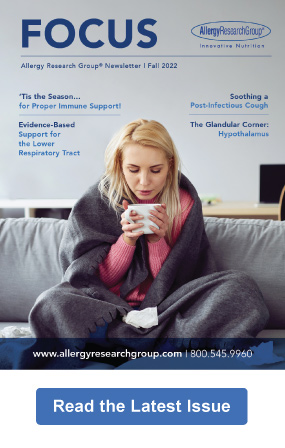Share this post
A natural solution for erectile dysfunction, cold hands, and vision
In Post 1 of 2, we explored the effects of maritime pine bark extract on blood pressure, hemorrhoids, and varicose veins. In this post we’ll zoom in on the extract’s effects on smaller blood vessels.
Let’s take a closer look at the vascular diseases that may be addressed with a daily dose of pine bark, from head (vision) to toe (Raynaud’s disease) – not to mention the in the bedroom as well (erectile dysfunction)!
Retinopathy and other microangiopathies
The smaller vessels of individuals with hypertension and diabetes are at risk of damage, largely due to advanced glycation end products (AGEs).
AGEs are harmful compounds that increase oxidative stress and inflammation in the body. Because AGEs are formed when fats or proteins combine with sugar in the bloodstream (in a process known as glycation), those with high blood sugar levels are at particularly high risk of developing AGE-related problems.[1] AGEs are also implicated in atherosclerosis (“clogged arteries”) and Alzheimer’s disease.[2]
AGEs are especially harmful to the smallest blood vessels in the body (known as the microvasculature), and can cause microangiopathies, diseases in which the capillary walls become so thick and weak that they bleed, leak protein, and slow blood flow.[3]
Pine bark extract has been shown to inhibit the formation of advanced glycation end products (AGEs) and support the health of the microvasculature in those with diabetes.
Thankfully, standardized pine bark extract (SPBE) has been shown to inhibit the formation of AGEs[4] and support the health of the microvasculature in those with diabetes.[5] Examples of diabetes-related microangiopathies that can be addressed with SPBE include retinopathy (eye problems), tinnitus (ringing in the ears),[6],[7] and nephropathy (kidney disease).[8],[9] AGEs can also cause – and SPBE may also treat – neuropathy (nerve damage).[10],[11]
In a small study examining the effects of SPBE in 24 patients with early stages of retinopathy,[12] the extract was shown to decrease retinal edema, decrease retinal thickness, and improve retinal blood flow. The SPBE-treated patients also enjoyed significant improvements in their vision two months after treatment, whereas no change was found in the control group. Similar outcomes on vision were observed in a study of SPBE’s effects on rats.[13]
Erectile dysfunction
Considering the important roles that blood flow and engorgement play in achieving and maintaining penile erection, it’s no surprise that blood vessel integrity and cardiovascular health are the cornerstones of erectile dysfunction (ED) prevention.[14] In fact, the best predictors of ED (other than age) are metabolic syndrome, cardiovascular disease, smoking, and medication use.[15]
Antioxidants, such as those found in SPBE, support the production and release of nitric oxide (NO) from the cells that line the blood vessels. NO causes the relaxation of the smooth muscles lining the vessels, resulting in vasodilation (the widening of the veins, arteries, and capillaries). Vasodilation in turn leads to reductions in blood pressure and improved blood flow throughout the body, including the reproductive system.[16] Unfortunately, NO production declines with age,[17] which explains in part why ED is more common in the later decades of life.
Multiple human studies have shown that SPBE improves erectile function.
Sildenafil (Viagra) and similar pharmaceutical drugs used to manage ED symptoms temporarily augment NO-mediated pathways, but sadly do not sustainably increase NO, and thus need to be used on an ongoing basis.[18]
Fortunately, SPBE has been observed to improve forearm blood flow in humans via an increase in NO production,[19] and these same mechanisms are likely how SPBE improves erectile function.
SPBE has been shown to improve erectile function, both as a standalone treatment and in combination with L-arginine, a precursor for NO formation.[20],[21] In one trial, for example, supplementation with SPBE (120 mg daily for three months) significantly reduced patients’ ED severity from moderate to mild.[22]
Raynaud’s syndrome
Raynaud’s syndrome (RS) is characterized by a spasm of the blood vessels of the hand and fingers. This contraction – or vasospasm, as it’s called in medicine – typically occurs as a response to cold or stress, and results in discomfort, color changes, and coldness in one or more fingers and/or toes.
Pine bark extract significantly improved symptoms of coldness, burning pain, paresthesias (pins and needles sensation), and color changes of the skin in individuals with Raynaud’s syndrome.
In a group of 67 females with primary, mild RS – all of whom worked in shops with refrigerators – 100 mg of SPBE daily significantly improved symptoms of coldness, burning pain, paresthesias (pins and needles sensation), and irregular color changes.[23] SPBE also decreased objective measurements of oxidative stress and increased transcutaneous oxygen pressure (the amount of oxygen diffused through the skin) more than in controls.
Summary
By acting as an antioxidant, increasing nitric oxide (NO) levels, and fighting advanced glycation end products (AGEs), standardized pine bark extract (SPBE) has been shown to support the health of blood vessels of all sizes. Some vascular conditions that may be improved with this botanical extract include: hypertension, retinopathy, nephropathy, tinnitus, erectile dysfunction, hemorrhoids, varicose veins, venous ulcers, and Raynaud’s syndrome. When vascular problems arise, SPBE is a great nutritional too to help keep the blood (and health) flowing.
Click here to see References
[1] Schmidt AM, et al. Cellular receptors for advanced glycation end products. Implications for induction of oxidant stress and cellular dysfunction in the pathogenesis of vascular lesions. Arterioscler Thromb. 1994 Oct;14(10):1521-8.
[2] Singh R, et al. Advanced glycation end-products: a review. Diabetologia. 2001 Feb;44(2):129-46.
[3] Shiel WC. Medical definition of microangiopathy. New York (NY): MedicineNet; 2018 [cited 2020 May 26]. Available from: https://www.medicinenet.com/script/main/art.asp?articlekey=7274
[4] Zhang TM, et al. Inhibitory effect of pycnogenol on generation of advanced glycation end products in vitro. Chinese Pharmacol Bull. 2003;19(4):437-40.
[5] Singh VP, et al. Advanced glycation end products and diabetic complications. Korean J Physiol Pharmacol. 2014 Feb;18(1):1-14.
[6] Luzzi R, et al. Improvement in symptoms and cochlear flow with pycnogenol in patients with Meniere’s disease and tinnitus. Minerva Med. 2014 Jun;105(3):245-54.
[7] Grossi MG, et al. Improvement in cochlear flow with Pycnogenol® in patients with tinnitus: a pilot evaluation. Panminerva Med. 2010 Jun;52(2 Suppl 1):63-7.
[8] Kim YJ, et al. Pycnogenol modulates apoptosis by suppressing oxidative stress and inflammation in high glucose-treated renal tubular cells. Food Chem Toxicol. 2011 Sep 1;49(9):2196-201.
[9] Stuard S, et al. Kidney function in metabolic syndrome may be improved with Pycnogenol®. Panminerva Med. 2010 Jun;52(2 Suppl 1):27-32.
[10] Singh VP, et al. Advanced glycation end products and diabetic complications. Korean J Physiol Pharmacol. 2014 Feb;18(1):1-14.
[11] Jankyova S, et al. Pycnogenol® efficiency on glycaemia, motor nerve conduction velocity and markers of oxidative stress in mild type diabetes in rats. Phytother Res. 2009 Aug 1;23(8):1169-74.
[12] Steigerwalt R, et al. Pycnogenol® improves microcirculation, retinal edema, and visual acuity in early diabetic retinopathy. J Ocul Pharmacol Ther. 2009 Dec;25(6):537-40.
[13] Kamuren ZT, et al. Effects of low-carbohydrate diet and Pycnogenol® treatment on retinal antioxidant enzymes in normal and diabetic rats. J Ocu Pharma Therap. 2006 Feb;22(1):10-8.
[14] Kapoor R, Kapoor A. Erectile dysfunction: a present day coronary disease risk equivalent. Indian J Med Res. 2016 Sep;144(3):307-10.
[15] Snyder PJ, Rosen RC. Overview of male sexual dysfunction [Internet]. Waltham (MA): UpToDate, Inc.; 2020 [cited 2020 May 22]. Available from: https://www.uptodate.com/contents/overview-of-male-sexual-dysfunction
[16] Carlström M, et al. Mechanisms underlying blood pressure reduction by dietary inorganic nitrate. Acta Physiol (Oxf). 2018 Sep;224(1):e13080.
[17] Ghebre YT, et al. Vascular aging: implications for cardiovascular disease and therapy. Transl Med (Sunnyvale). 2016 Dec;6(4):183.
[18] Jeremy JY, et al. Effects of sildenafil, a type-5 cGMP phosphodiesterase inhibitor, and papaverine on cyclic GMP and cyclic AMP levels in the rabbit corpus cavernosum in vitro. Br J Urol. 1997 Jun;79(6):958-63.
[19] Nishioka K, et al. Pycnogenol, French maritime pine bark extract, augments endothelium-dependent vasodilation in humans. Hypertens Res. 2007 Sep;30(9):775-80.
[20] Aoki H, et al. Clinical assessment of a supplement of Pycnogenol® and L-arginine in Japanese patients with mild to moderate erectile dysfunction. Phytother Res. 2012 Feb;26(2):204-7.
[21] Stanislavov R, Nikolova V. Treatment of erectile dysfunction with pycnogenol and L-arginine. J Sex Marital Ther. 2003 May-Jun;29(3):207-13.
[22] D̆uračková Z, et al. Lipid metabolism and erectile function improvement by Pycnogenol®, extract from the bark of Pinus pinaster in patients suffering from erectile dysfunction-a pilot study. Nutr Res. 2003 Sep 1;23(9):1189-98.
[23] Hu S, et al. Management of mild, primary Raynaud Syndrome: supplementation with Pycnogenol®. Minerva Cardioangiologica. 30 Sep 2019;67(5):392-8.
The information provided is for educational purposes only. Consult your physician or healthcare provider if you have specific questions before instituting any changes in your daily lifestyle including changes in diet, exercise, and supplement use.
Share this post
Dr. Erica Zelfand
Related posts
Say Yes to NO: Nitric Oxide
Support for heart health, sexual performance, and beyond Nitric oxide (NO) is a tiny gas molecule produced in the blood vessels, nerves, and immune cells. Best known for its role in maintaining blood pressure, NO also mediates penile erections, supports healthy blood flow to the brain, enhances muscle oxygen use during exercise, and helps…
Hemicellulose – A Natural Immune Enhancer?
Plant and Mushroom Blend Provides Gut and Immune Support Hemicellulose isn’t a new thing. In fact, it is as timeless as the plants and fungi that cover the face of our planet. Within plants, much like cellulose, hemicellulose is structural in function. It differs from cellulose in that it is a polysaccharide comprised of…
Spring Equinox Detox
Does detoxing really help health? Spring is almost here! The days are gradually getting brighter, the flowers are beginning to bloom, and the dawn chorus is sounding more cheerful. The challenging cold, dark days of winter are certainly behind us and longer, warmer days are on the horizon. The Spring Equinox occurs on March…
The Beauty of “Beasty Bits”
Glandular products for advanced support What is Glandular Therapy? When it comes to the matter of the endocrine glands and the hormones they produce, modern medicine has done well in isolating and synthesizing in the lab the very hormones we produce in our bodies. Whether it’s the insulin injected by a Type I diabetic,…
Are You Getting Enough DHA?
Docosahexaenoic acid for brain and eye health Are you familiar with DHA, also known as docosahexaenoic acid (pronounced doh-koh-sah-hex-ah-een-oh-ick acid)? DHA is the longest-chain omega-3 fatty acid, found in fish oil and in the diet in general. Along with its omega-3 companion, eicosapentaenoic acid (EPA), DHA is essential for health at all ages, which…
Fitting Exercise into Your Day
How to Fit Excercise Into a Busy Schedule Many of us struggle to find time for exercise, yet exercise is crucial for cardiovascular health, weight management, detoxification, and even mental and emotional health. The work day is long, and just fitting in the basics of grocery shopping, laundry, and getting from point A to…
Categories
- Botanicals (56)
- GI Health (53)
- Healthy Aging (121)
- Immune Support (39)
- In The News (39)
- Kids Health (21)
- Stress and Relaxation (50)
- Uncategorized (1)
- Video (9)
- Vitamins & Minerals (51)




